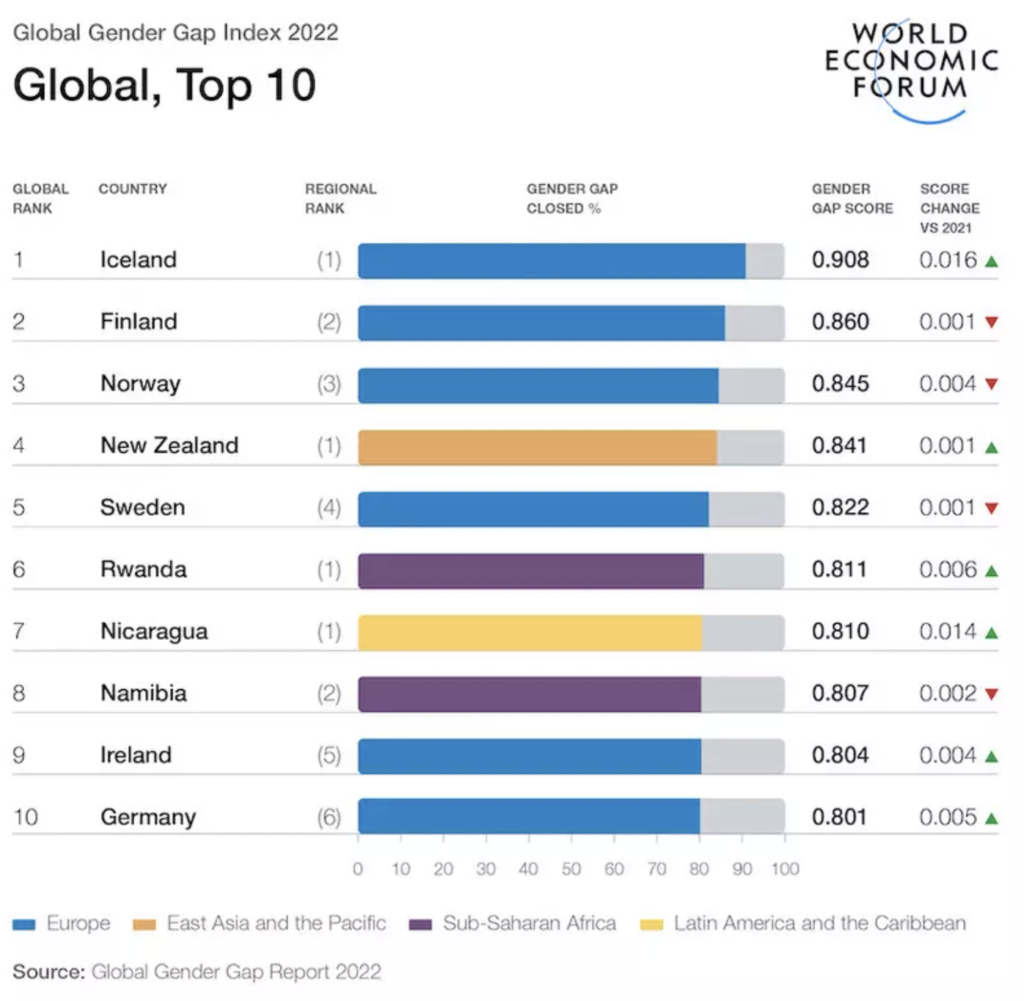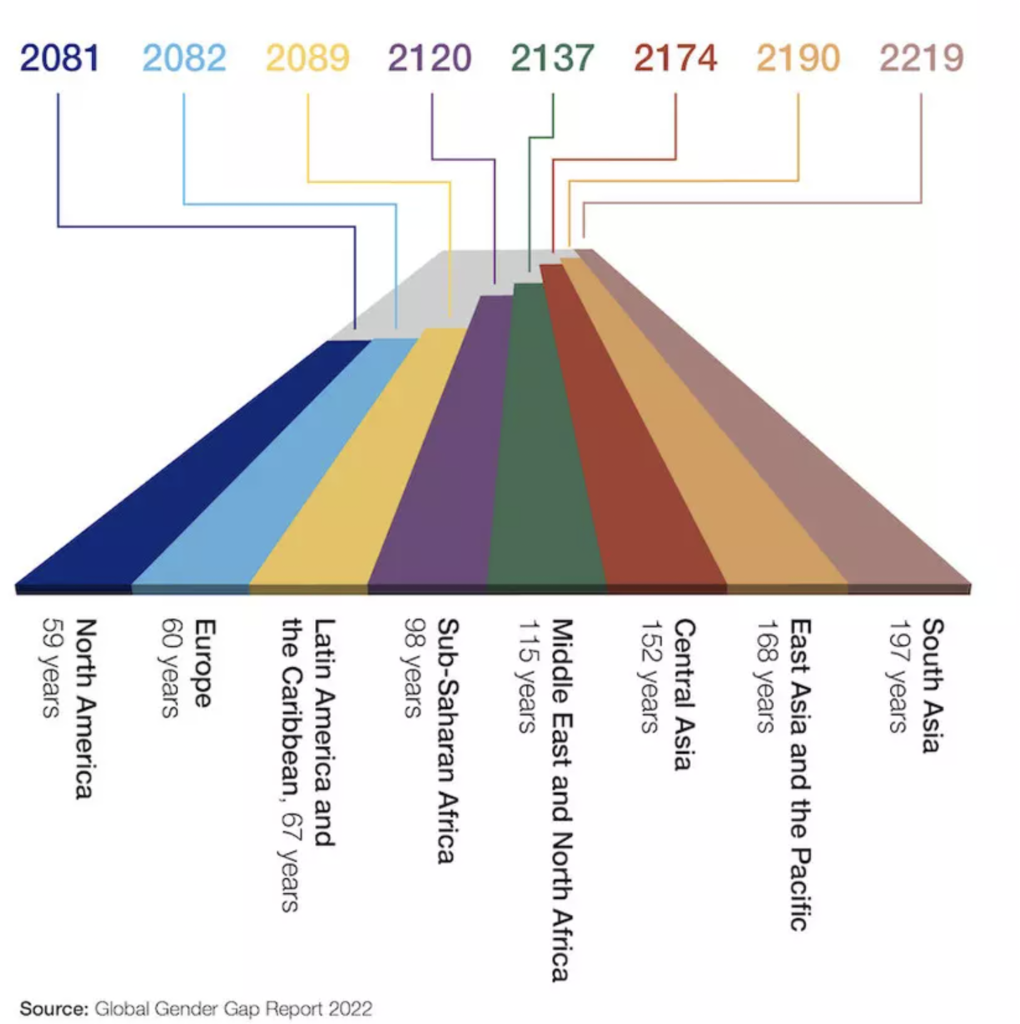It’s 2022 and the global gender gap has been closed only by 68.1%. According to the new 2022 Global Gender Gap Report by the World Economic Forum we have actually taken a step back and it will take another 132 years to close the gap completely—at least at the current rate.
The Report
Within the report different gaps are measured: Health and Survival, Educational Attainment, Economic Participation and Opportunity as well as Political Empowerment. Out of these Political Empowerment is the furthest away from closing the gap, with only 22% closure while the Health and Safety gender gap has closed by 95.8% when looking at the 146 countries that were examined.

Iceland remains the only country in the world that has closed more than 90% of its gender gap, with 90.8%. The top 10 of the list (Iceland, Finland, Norway, New Zealand, Sweden, Rwanda, Nicaragua, Namibia, Ireland, Germany) have achieved at least an 80% gap closure, but remain the only 10 countries to have done so so far.

Regional Differences
Comparing the different regions, North America leads with 76.9% closure, followed by Europe (76.6%). Latin America and the Caribbean have closed 72.6% of their gender gap while Central Asia (69.1%) and East Asia (69%) are on 4th and 5th place. Sub-Saharan Africa has bridged 67.8%. The regions with the least closure with only 63.4% and 62.4% are Middle East and North Africa as well as South Asia respectively. Overall, Middle East, North Africa as well as most of Asia will take more than 100 years, South Asia almost 200 years, to close the gap at the current rate while the other regions are overall between 60 and 70 years away.

The Effects of Covid-19
Even though 132 is a slight improvement to 2021, compared to pre-pandemic estimates, which stated it would take “only” 100 years, it is a step backwards, mainly due to the generational loss and changes that happened due to Covid-19 between 2020 and 2021. Women are often primary caregivers and are more likely to work in industries such as healthcare as well as do unpaid work at home. Men’s share of time spend doing unpaid work as a proportion spent in total work is only 19%, while for women it is 55%. Due to our general social structures women were much more negatively impacted by the pandemic causing a setback in gender parity. Another interesting fact is that even when it comes to stress levels women are faced with 4% more than men, which is adding to the global health crisis and rising mental and emotional disorders, which disproportionately affect women.
Final Thoughts
Looking at the report, it becomes clear that there is still a long way to go and a lot of work to do. People sometimes ask why we need feminism, aren’t we already equal? As this shows, we are far from it and unless we do better in the future it will take many more generations until we reach full gender parity. Moreover, there will be more events around the world that will cause a setback in gender equality, whether that is another pandemic, a war or something else. That means, we need to put our effort into making sure that we move forward, not backward. Gender gaps, no matter in what industry and area of life, are affected by many different factors, such as socioeconomic factors, long-standing structural barriers, technological changes and of course societal expectations, policies and legal frameworks. All these issues impact gender parity and will continue to do so unless we do the work to change the system.
Get more like this—Sign up for our daily inspirational newsletter for exclusive content!
__
Photo: Unsplash; World Economic Forum




